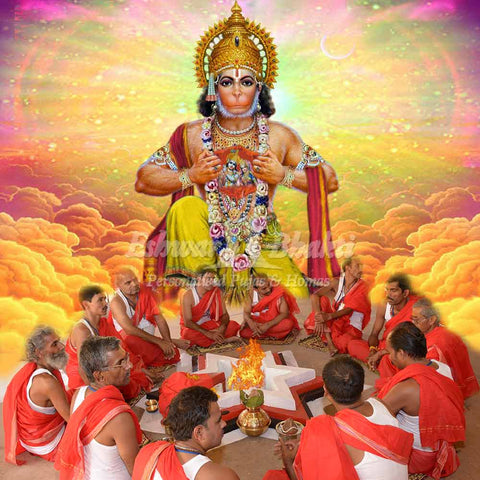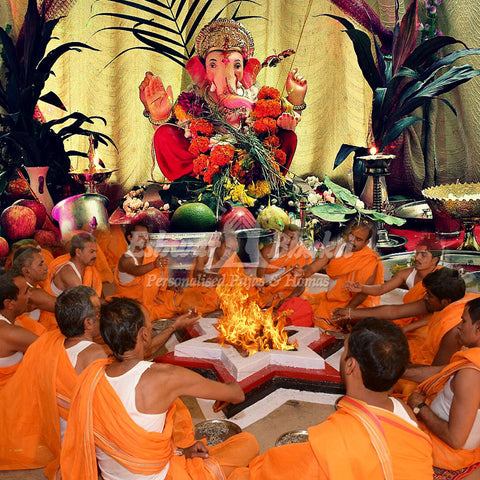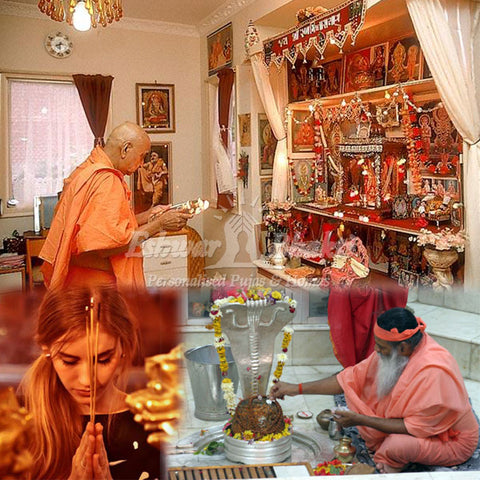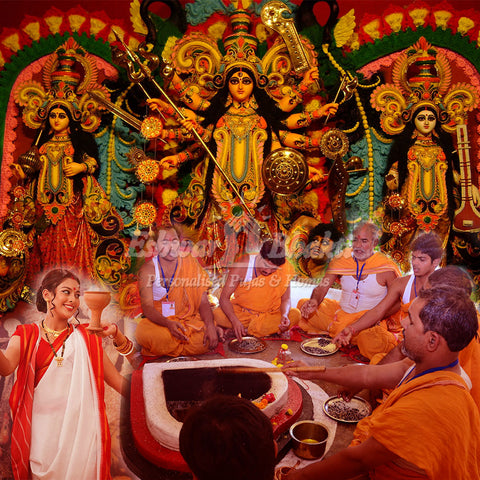Flowers in a Puja
 From the ancient days, rishis and other devotees offered flowers to gods and goddesses during their pujas. The significance of flowers in puja becomes clear from the etymology of the word puja. Puja comes from two Sanskrit words. The first two letters "Pu" represent Pushpa, which means flowers, and last two "Ja" represent Japa, which refers to the chanting of prayers. From the pictures and Puranas, we can find that Gods and Goddesses hold or adorn flowers. For instance, Laksmi Devi has a lotus flower in her hand.
From the ancient days, rishis and other devotees offered flowers to gods and goddesses during their pujas. The significance of flowers in puja becomes clear from the etymology of the word puja. Puja comes from two Sanskrit words. The first two letters "Pu" represent Pushpa, which means flowers, and last two "Ja" represent Japa, which refers to the chanting of prayers. From the pictures and Puranas, we can find that Gods and Goddesses hold or adorn flowers. For instance, Laksmi Devi has a lotus flower in her hand.
The offering of flowers to the deities marks the completion of the puja. It is a way of conveying our devotion to the deities. It also helps to keep the gods and goddesses happy. While we offer flowers, it will ensure that positive energy spreads throughout the place. Devotees provide fresh flowers to the deities during their morning flowers. Apart from Pujas, people use flowers for other purposes like decorations, in marriage ceremonies, etc.
In this article, we will look into the significance of offering flowers in a puja, their benefits, and the flowers we have to provide to different deities.
Flowers offered to different deities and their importance: It is always essential to provide fresh flowers plucked from the plants. We must always consider not taking flowers from the ground. Similarly, we should not use artificial flowers, dead flowers, and petals of flowers during pujas. Let's first look into the types of flowers we offer different deities.
1. Lord Hanuman (Jasmine) - Devotees offer five or more jasmine flowers at the feet of the idols and pictures of Lord Hanuman. It is a way of showing their reverence along with vermilion.
2. Ma Kali (Red Hibiscus) - Worshippers provide garlands made from 108 Red Hibiscus flowers to Ma Kali. It is because the petals of Hibiscus resemble the shape of Ma Kali's tongue. The redness of the flower is also a symbol of Ma Kali's fierceness.
3. Saraswati Devi (Palash) - As per our beliefs, we consider Saraswati Devi to be fond of white flowers like Palash. By offering Palash to Devi during the puja is an ideal way of worshipping her.
4. Lord Vishnu (Parijata, Marigold) - Devotees offer the garlands made from Marigold flowers to Lord Vishnu. It is saffron in color. Parijata, popularly known as Coral Jasmine, is another flower used during the worship of Lord Vishnu. As per the ancient scripts and tales, we believe it is a flower that emerged during the churning of the ocean. While worshipping Lord Krishna, one of the Avataras of Lord Vishnu, devotees place basil leaves on the feet of his idols and pictures. It is a way of conveying their devotion.
5. Lord Shiva (Dhatura, Crown Flower, Purple Orchid) - According to the legends, Dhatura is a flower that emerged during the churning of the ocean. It helped in consuming the poison and came from Lord Shiva's chest. Devotees believe Dhatura is Lord Shiva's favorite flower. They usually offer Dhatura while conducting pujas for Lord Shiva. Crown Flower and Purple Orchid are other significant flowers used in the worship of Lord Shiva.
6. Goddess Durga (Nerium Oleander) - Goddess Durga likes reddish flowers. So, devotees offer flowers like Nerium Oleander to pay their respects to Goddess Durga.
7. Goddess Lakshmi (Lotus) - As we have discussed earlier, Goddess Lakshmi holds a Lotus flower in her hand. While we offer Lotus flowers to Her, we can gain Her blessings and attain wisdom.
These are some flowers offered to Hindu deities and their importance. It is always essential to consider the number of flowers used in Pujas. For instance, we can offer:
1. Zero to ten flowers to Lord Shiva
2. One to nine flowers to Goddess Durga
3. Five flowers for Lord Hanuman
4. Eight flowers for Lord Ganpati
5. Three flowers for Lord Krishna
6. Four flowers to Shriram
Significance and benefits of offering flowers in a puja: Offering flowers in a puja has different benefits and importance. It is not just a way of conveying our devotion to divine entities. Let us look into the significance of flowers in a puja.
1. Flowers can attract the subtlest particles or Pavitraks from the idols. It is a way of transmitting God's Chaitanya to the devotees.
2. As mentioned in the previous section, we offer flowers in particular numbers. It is a way of attracting waves of knowledge, desire, and action from the deities.
3. While offering flowers to Gods and Goddesses, always start from bright colored small flowers. You can conclude with large white flowers. It is a symbol of moving away from the materialized world. It aids in merging with the non-materialized realm of the Gods.
4. When you are offering a flower, always provide the flower with its stalk facing the deity. It helps in emitting Sagun waves to the devotees. They can accept the Chaitanya from the divinity.
5. Through the medium of smell, touch, and sight, flowers act as a way of attaining Sattvik waves.
6. By offering fresh flowers, we can embrace higher levels of vibrations from the idols.
7. The flowers can fight negative energies and vibrations. It releases frequencies akin to that of the divine principles.
These are some of the significances of offering flowers in a Puja. Now, let us look into their benefits of flowering flowers.
1. The fragrances from the flowers can enhance our mood. It also helps us to concentrate and focus.
2. Most of the flowers have medicinal values. Being in their presence can evade several diseases.
3. Flowers can improve the health of our Chakras. It is because their fragrances act performs the role of aromatherapy.
4. They can enhance our connection with the divine entities. It also allows us to move away from materialism.
5. While plucking flowers in the morning for pujas, it helps us to connect with nature. It is also a way of relaxing our minds.
These are some of the many benefits of flowers in pujas and other rituals. Incorporating flowers into our daily prayers is the perfect way to enhance our connection with the divine entities.




